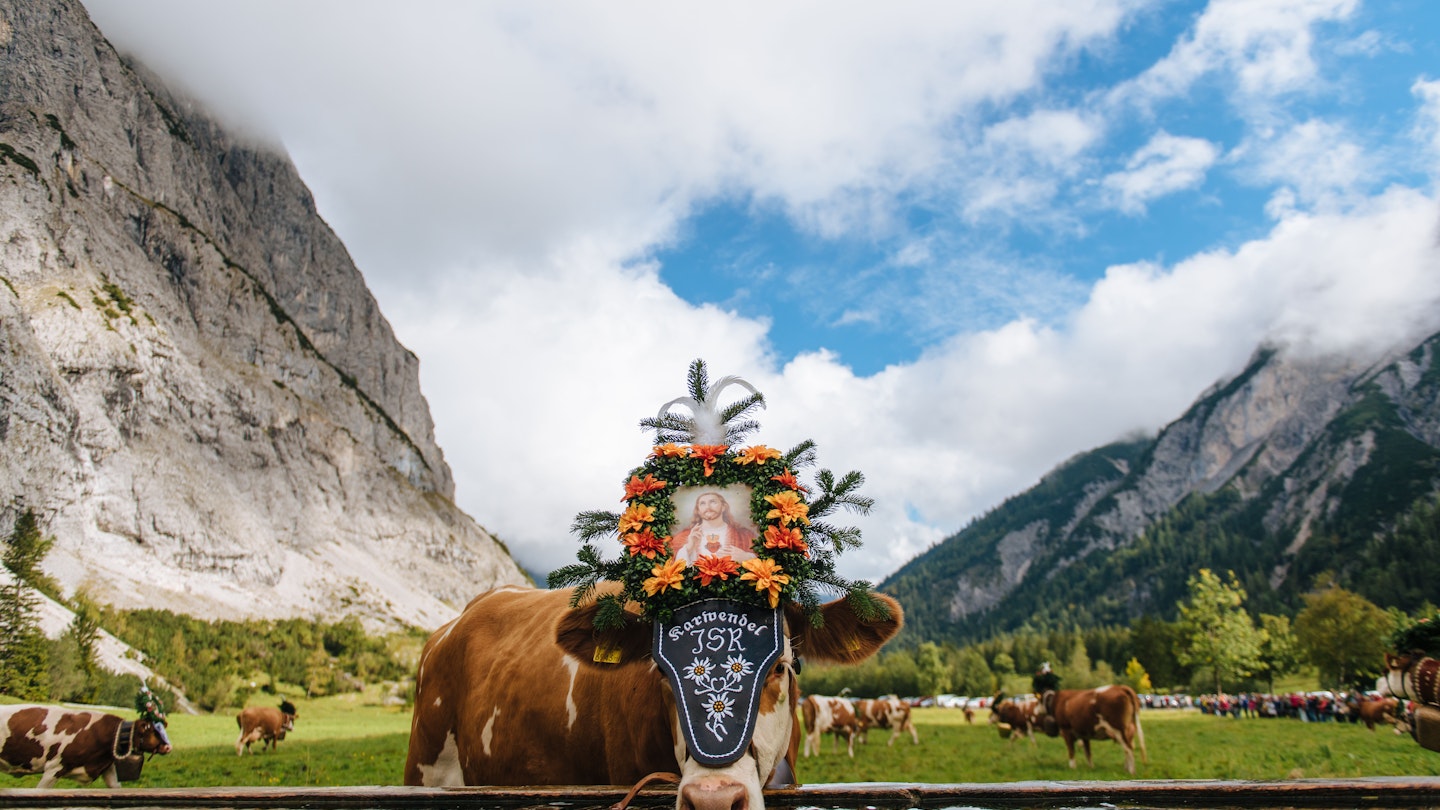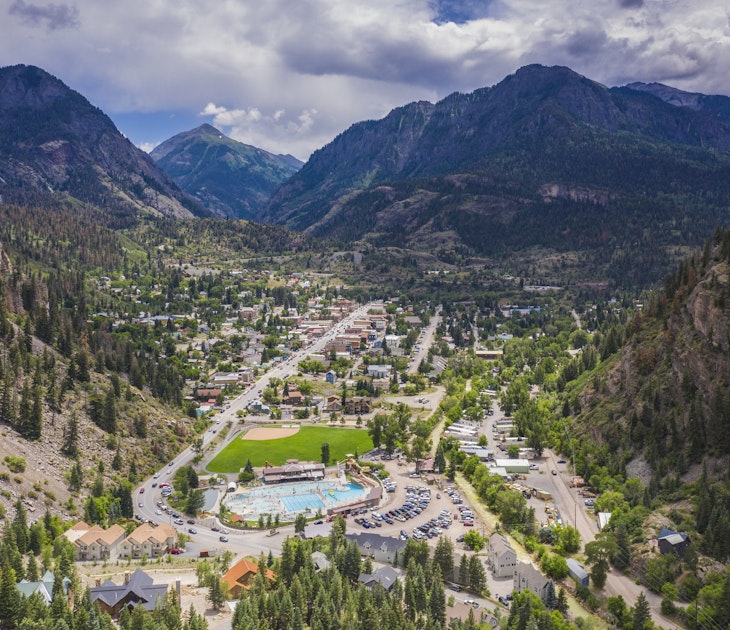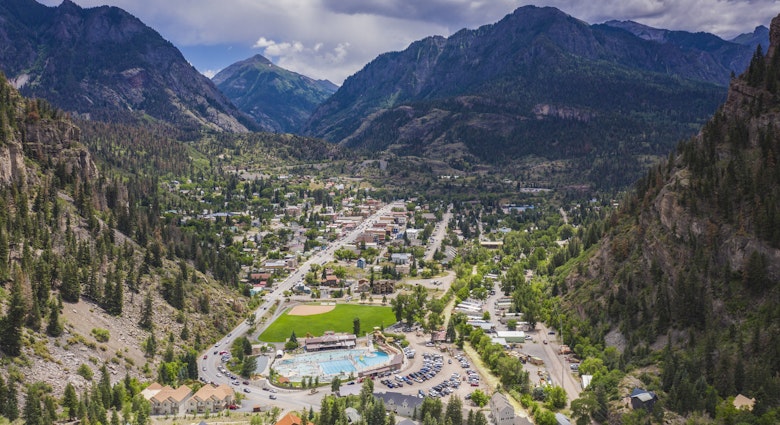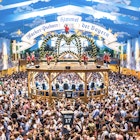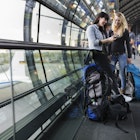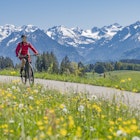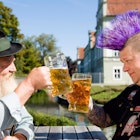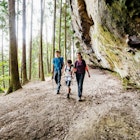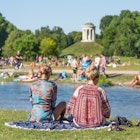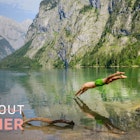The Almabtrieb is both a prized tradition among Alpine farmers and a well-loved spectacle among tourists. But climate change and shifting economics are contributing to an uncertain future.
It was, in many ways, a typical scene in the town of Pertisau, up in the Austrian Alps: a herd of brown-and-white cows meandered across a pasture, tendrils of fog hugging the rocky peaks towering above them.
But this chilly Friday in mid-September was not a normal day at the Gramai Alm, a hotel high in the Austrian mountain province of Tyrol. The 45 cows were dressed up for a special occasion, touting heavy metal bells on embroidered leather straps and elaborate, flower-adorned headdresses on their bobbing heads. Hundreds of people had come out, and we huddled along the rope line, eager to see them as if they were celebrities and this was the red carpet.
Onlookers called to individual cows, hoping they might pause or turn towards them long enough for a photo. The cows, for their part, rarely obliged: they were far more intent on doing what cows generally do, grazing lazily on bright tufts of grass, wandering slowly back and forth across the meadow.
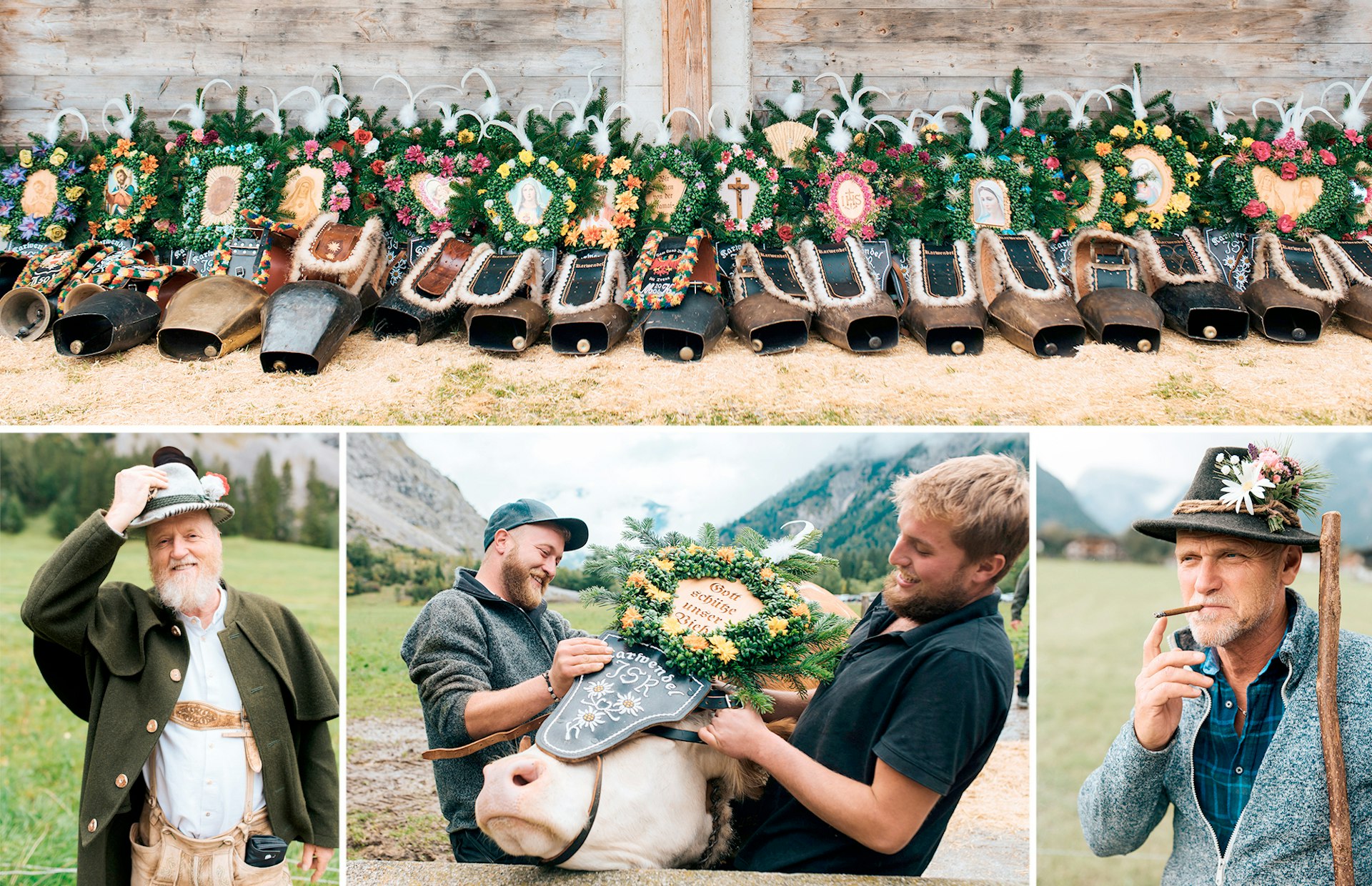
A cattle drive, but make it fancy
Across the Austrian and German Alps, cattle drives known as Almabtrieb have been part of local tradition for centuries. The concept is simple: cows spend the warm months, from late spring into early fall, grazing in the high mountain pastures. When the weather starts to turn cold again, towns organize events to bring the cows back down the mountain and into the stalls and farms where they’ll spend the winter. The tradition started as both a way to mark the end of summer and honor the outsize role that agriculture, and the cows specifically, play in Alpine towns.
Tourists and locals alike gather to watch the cows be decorated and follow them along their path into town. At the end, there’s always a celebration, with music and traditional Austrian delicacies like schnitzel, roast pork and frittatensuppe, a soup with thin pancake strips.
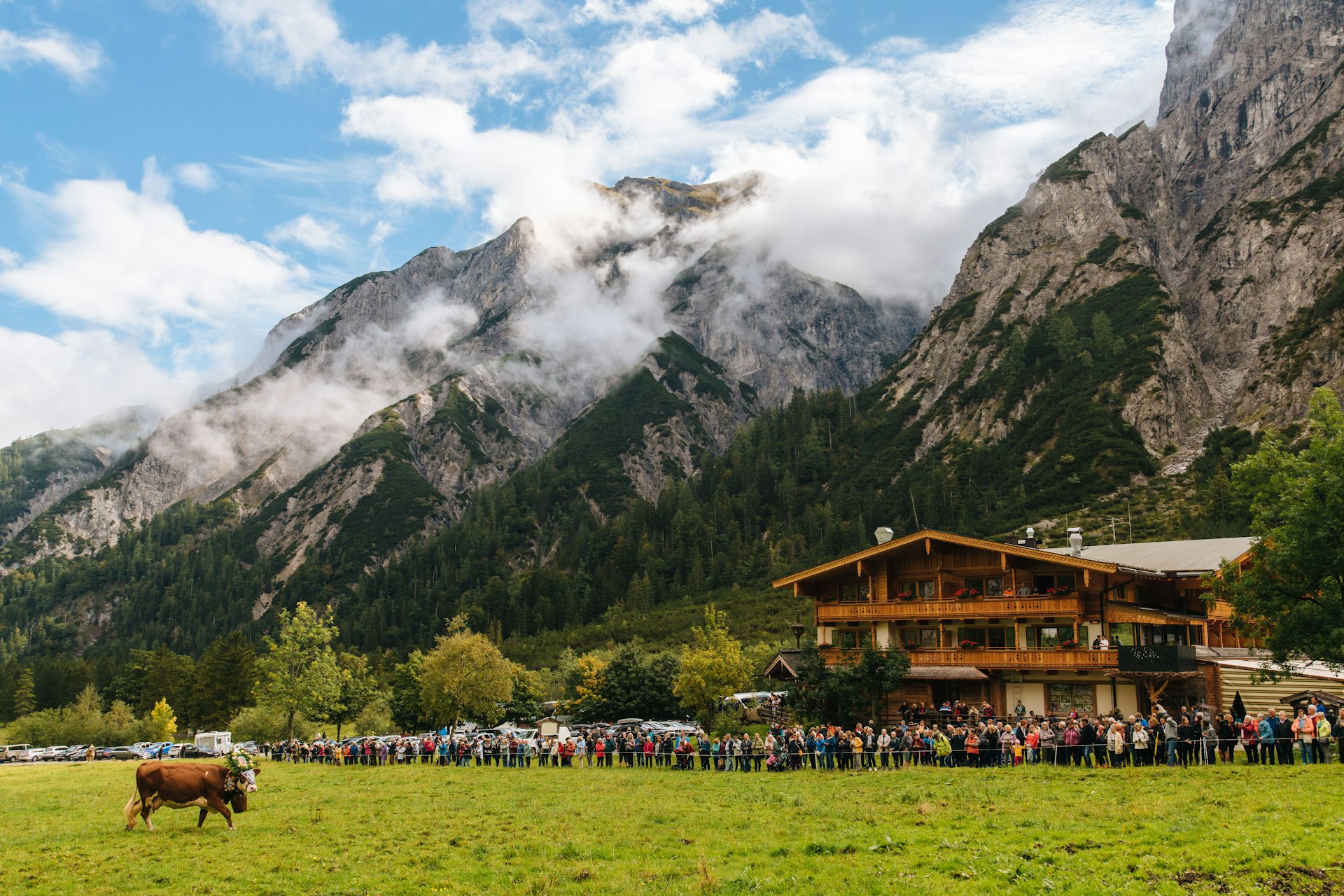
The ceremony serves as a window into Alpine culture in a part of the world where tradition – sometimes hyper-local – is deeply important. Each town has a slightly different way of doing things. They might design different decorations for the cows or structure the day’s events in a slightly different order.
The mountains, the bovine headdresses, the Alpine backdrop: it all can seem like a utopian expression of rural life. But across the region, Almabtrieb events represent a way of life that is facing unprecedented challenges. The cows grazing in Alpine pastures play a crucial role in making these well-known mountain ranges look the way they do today, replete with closely trimmed green meadows and a network of trails that draw tourists of all kinds to the region. However, because of changes in the climate and global economics, this way of life for Alpine farmers is becoming untenable.
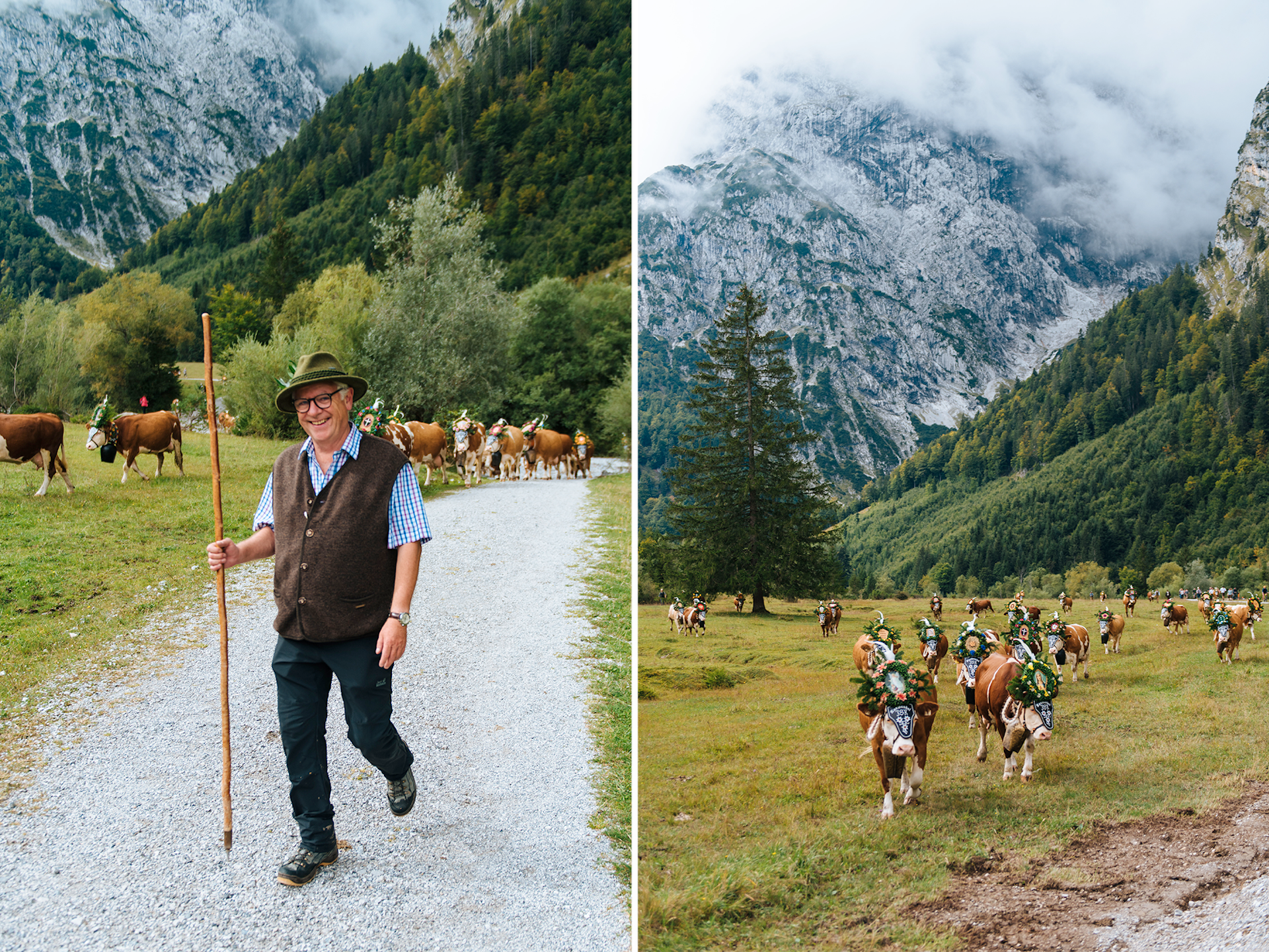
An uncertain future
In Pertisau, the tradition is relatively young by Alpine standards. The Rieser family, who own the approximately 120 cows that spend their summer up at the Gramai Alm, first started organizing the event in 1960. At the time, it was a small celebration for the local community; over the years, it’s increasingly become a destination for tourists.
The evening before the big cattle run, sitting in the lobby of his family’s hotel in Pertisau, Sepp Rieser told me he was at the first local Almabtrieb as a young boy. In recent years, he’s been in charge. Wearing a traditional dark green hat and holding a herding stick, he leads the cattle down through the valley to Pertisau and beyond.
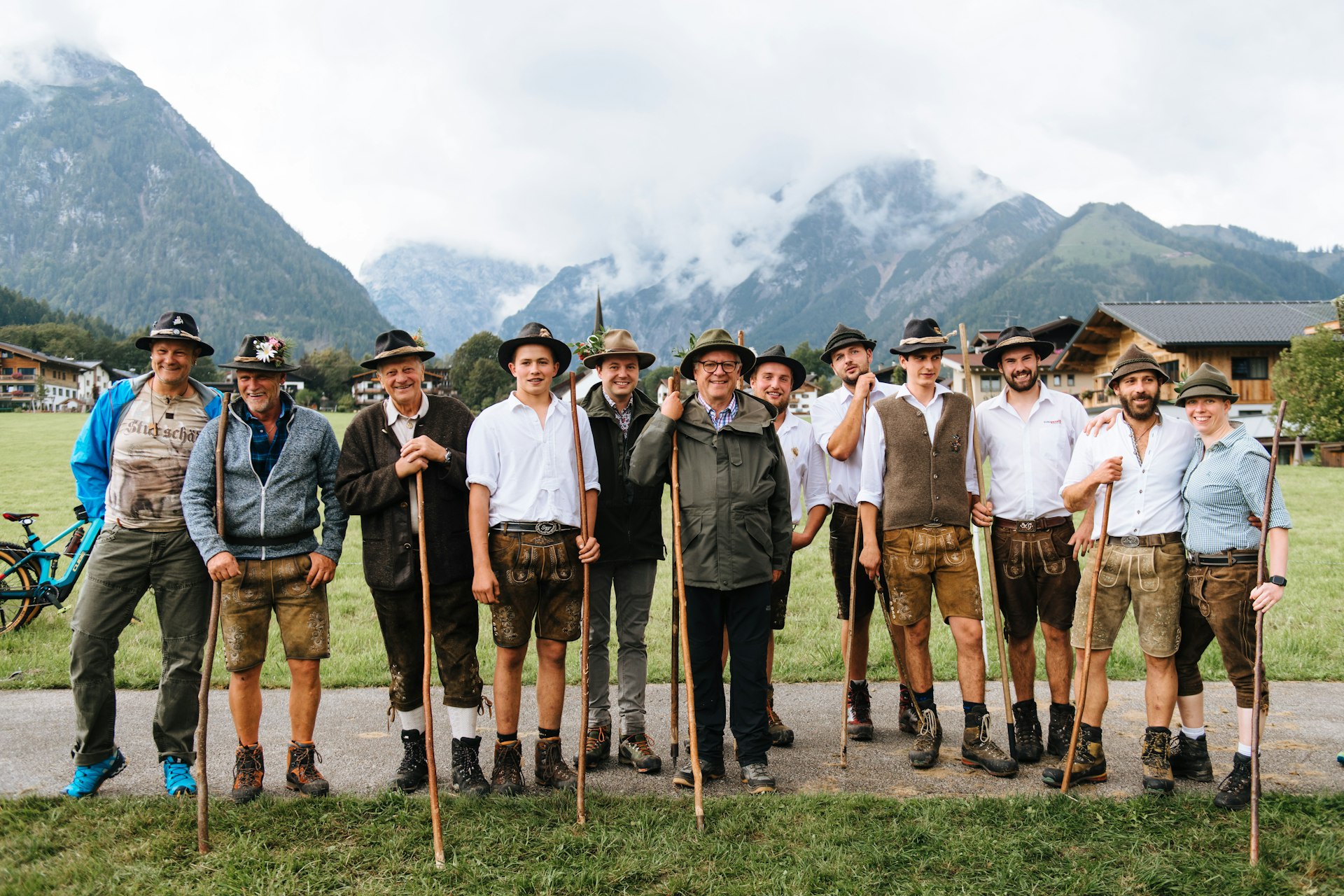
Rieser explained that across the Alps, farmers face increasingly tough odds to stay in business. Globalization and climate change have made affording a family-run farm like his more difficult. Warmer temperatures have begun to dramatically reshape Alpine landscapes, melting glaciers and changing what kinds of plants grow where; and, as is the case all over the world, young people are looking for more lucrative work, leaving small-scale agriculture behind. To own a farm these days, Sepp Rieser told me, hard work is only one part of the equation; you also need a major helping of optimism.
“You have to have a lot of idealism and joy for farming. You can’t do it just to make money,” he said. “It's a shame that it's so difficult, but we do it with a lot of love and a lot of passion.”
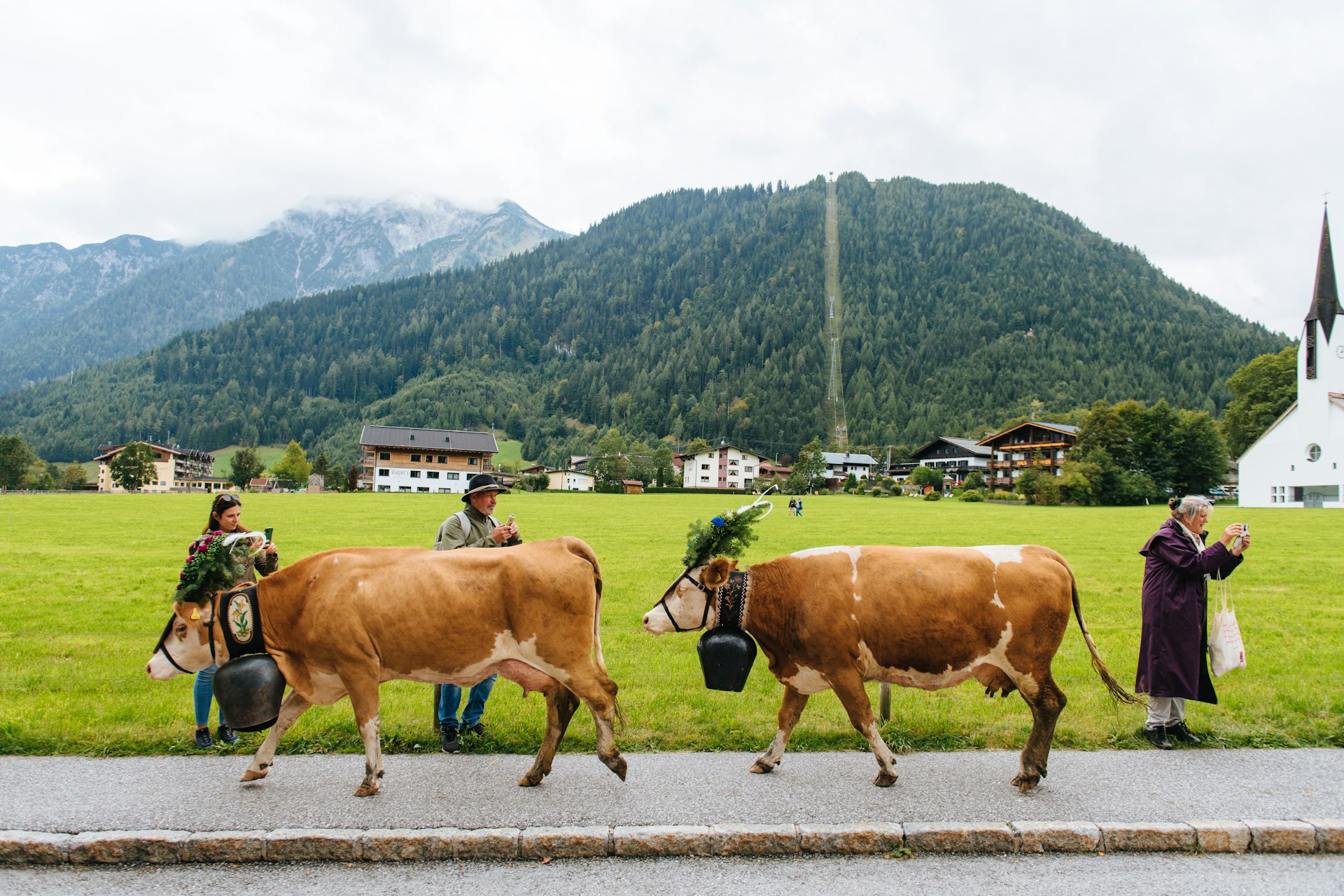
It’s not just the day-to-day farming that is under threat: the Almabtrieb itself is getting harder to continue. For one thing, there’s now too much traffic on local streets, which has meant herders have had to reduce the number of cows that can take part every year. What’s more, it’s increasingly difficult to find experienced farmhands who can join on Almabtrieb day and help herd the cows properly. “It doesn’t help me at all when I have 20 people [around], but none of them have any idea about a cow,” Rieser said.
For him and his family, who own the Hotel Karwendel in downtown Pertisau where the post-Almabtrieb celebration took place this year, organizing the Almabtrieb is an exercise in balancing tradition and tourism. Unlike some towns, which organize massive festivals for the cows’ arrival in town, the Riesers host a smaller celebration. Rather than spilling into the streets of the town, the celebration in Pertisau takes place entirely in their hotel’s restaurant and out on the terrace, overlooking the pasture where the cows rest. But even scaled down as it is, the Rieser family understands tourism is an integral part of the tradition’s survival.
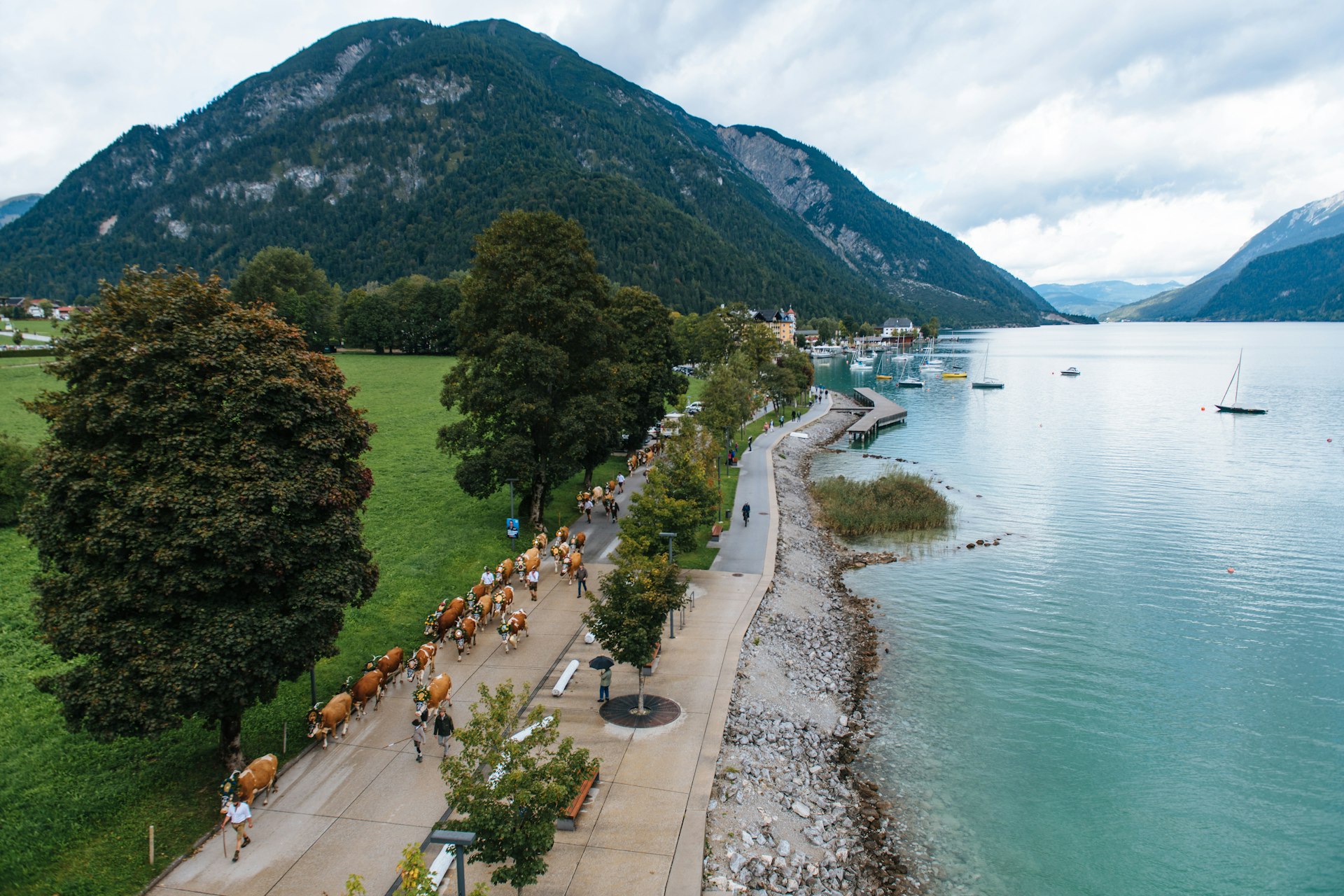
Tradition for some, destination for others
Pertisau, a small town ringed by high mountain peaks on the clear blue Lake Achensee, is relatively well-positioned to benefit from an event like September’s Almabtrieb. The town was once the summer residence of Kaiser Maximilian I, one of the best-known Habsburg leaders in the region’s history, which has put it on the map for hotels and visitors and helped the growth of a robust tourism industry.
But even as new businesses pop up catering to hikers and vacationers, much remains unchanged. Up at Gramai Alm, the light wood furniture, checkered patterns on chairs, tables and napkins, and stuffed hunting trophies all make the space feel like it’s out of another time.
It is that commitment to tradition – what some might call “authenticity” – that draws people to witness the Almabtrieb. On the big day, hundreds of people arrived in cars, by bicycle and in tour buses. As I watched the cows saunter into the meadow one by one, the ringing of their bells mixed with the low-level sound of German chatter around me. It became clear that most of the tourists were German and Austrian, perhaps visiting for a glimpse of a traditional way of life that they no longer experienced themselves. Some stood, cameras and phones ready to snap pictures of the cows; others sat at a remove, watching the scene with a Hefeweizen or a bottle of schnapps.
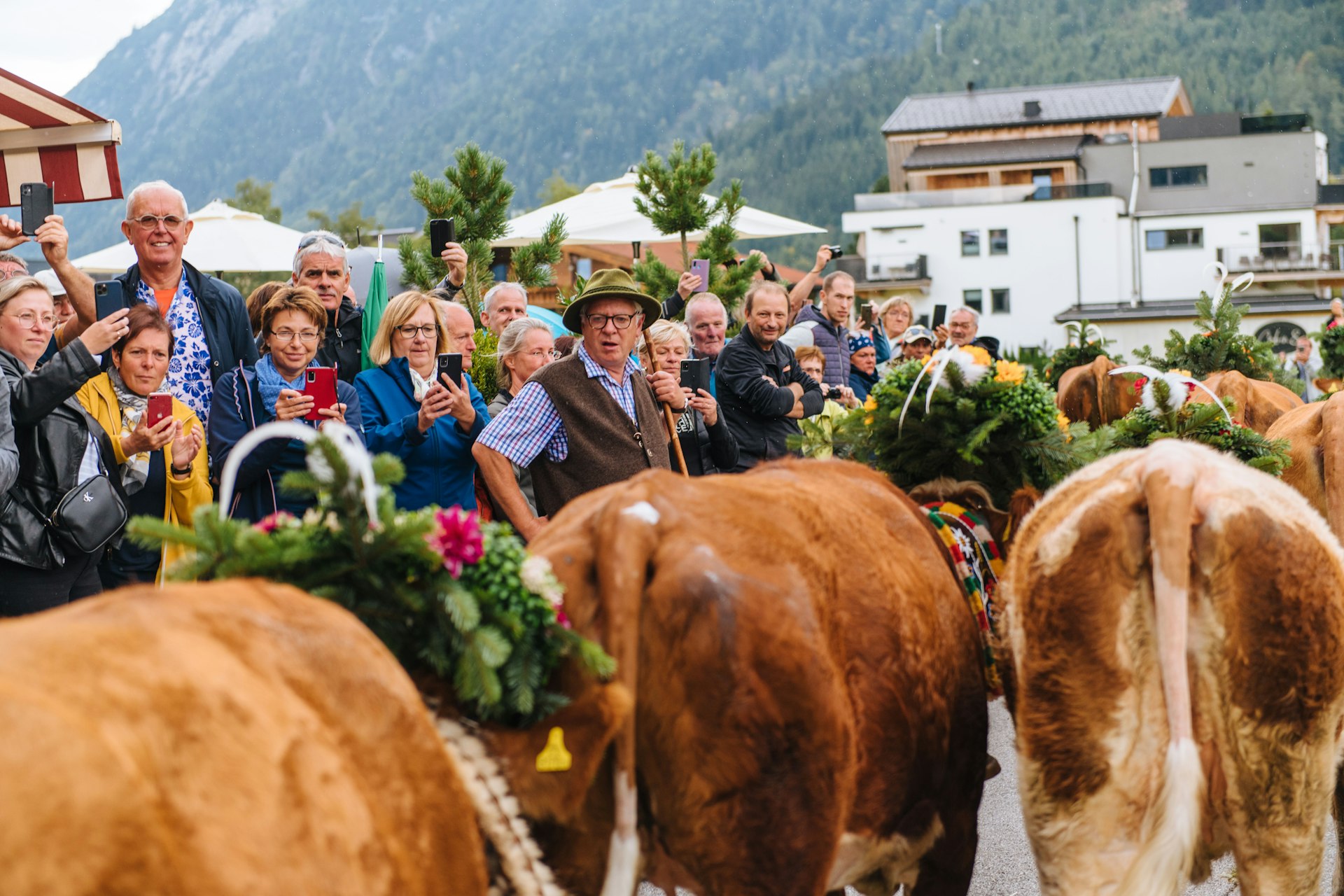
Pamela, a young woman from the eastern German state of Thuringia, said she and her mother had planned their trip to Achensee specifically to be in town for the Almabtrieb because they were fascinated by the tradition. “We have cows, but we don’t have Almabtrieb,” she said excitedly.
As the crowds reached their peak, I spoke with Hubert Wöll, decked out in lederhosen, thick wool socks and a gray Alpine hat. Wöll, born and raised in the area, drives a van to ferry visitors to and from the Gramai Alm for the event. When I asked him how many locals he thought were here this year, he said: “There are a hundred four-legged locals and a thousand two-legged tourists.”
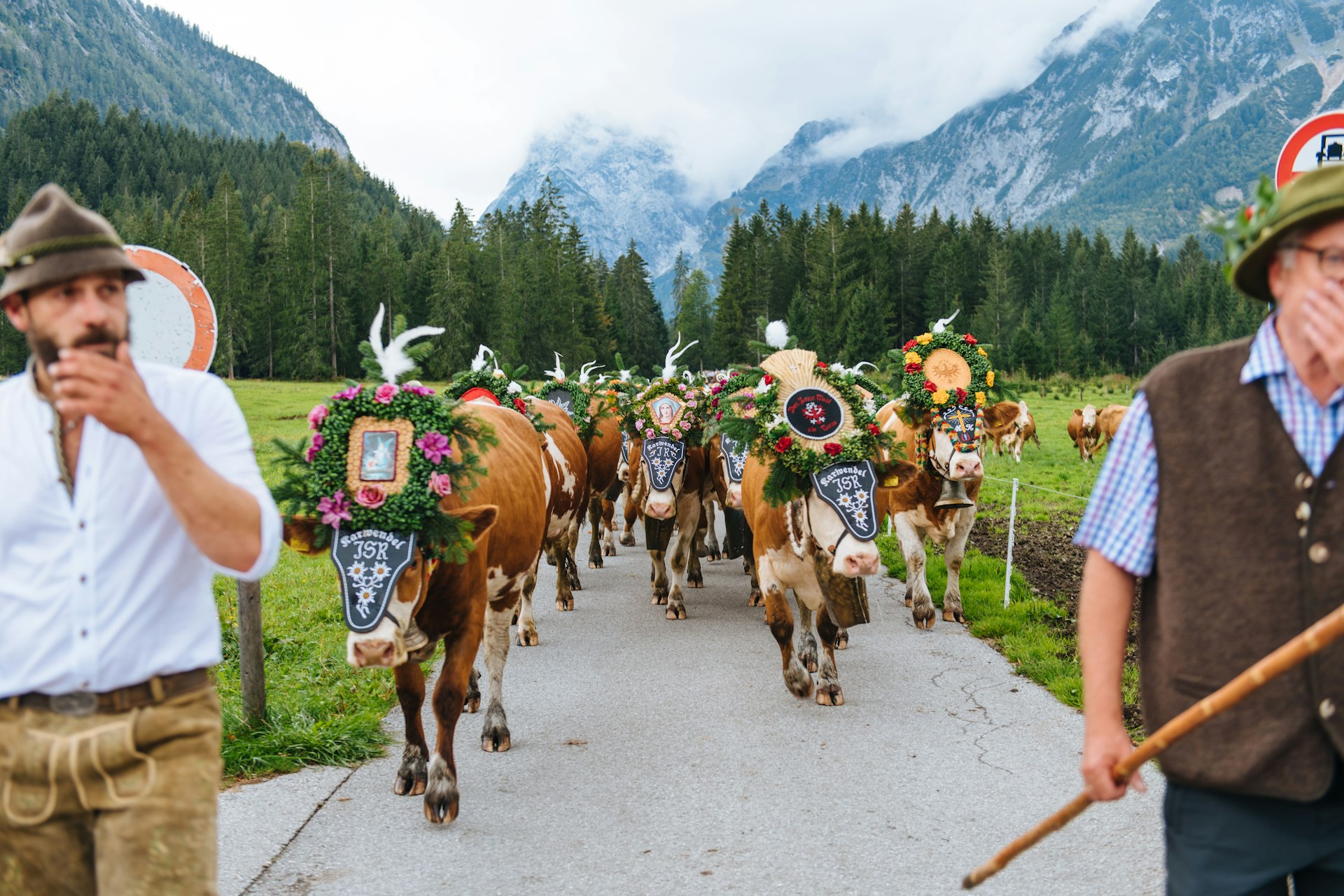
For now, the bells still ring
Once the cows were fully dressed up, the cattle drive began. A group of young men with long herding sticks grouped the cows together and got them trotting down through the valley. Some people had staked out spots along the way to watch the cows pass by; others followed on bikes or by foot.
We hopped in the car to get ahead of the cows, seeing flashes of movement and color as we drove alongside the pastures on a narrow two-lane road. Waiting in one wide field for the cows to arrive, I heard them before I saw them. What started as a faint jingle quickly crescendoed as they approached, a herd silhouetted against the jagged mountains behind them.
One farmer on horseback led the procession, trotting ahead of the fray as young farmhands in checkered shirts and lederhosen worked to keep the cows together. By the time the cows reached the town and continued through the streets, hundreds of onlookers had gathered along the sidewalks. Maria Cavins, an American from northern Virginia, said she had first come to an Almabtrieb in the Austrian Alps when she was living nearby in Italy.
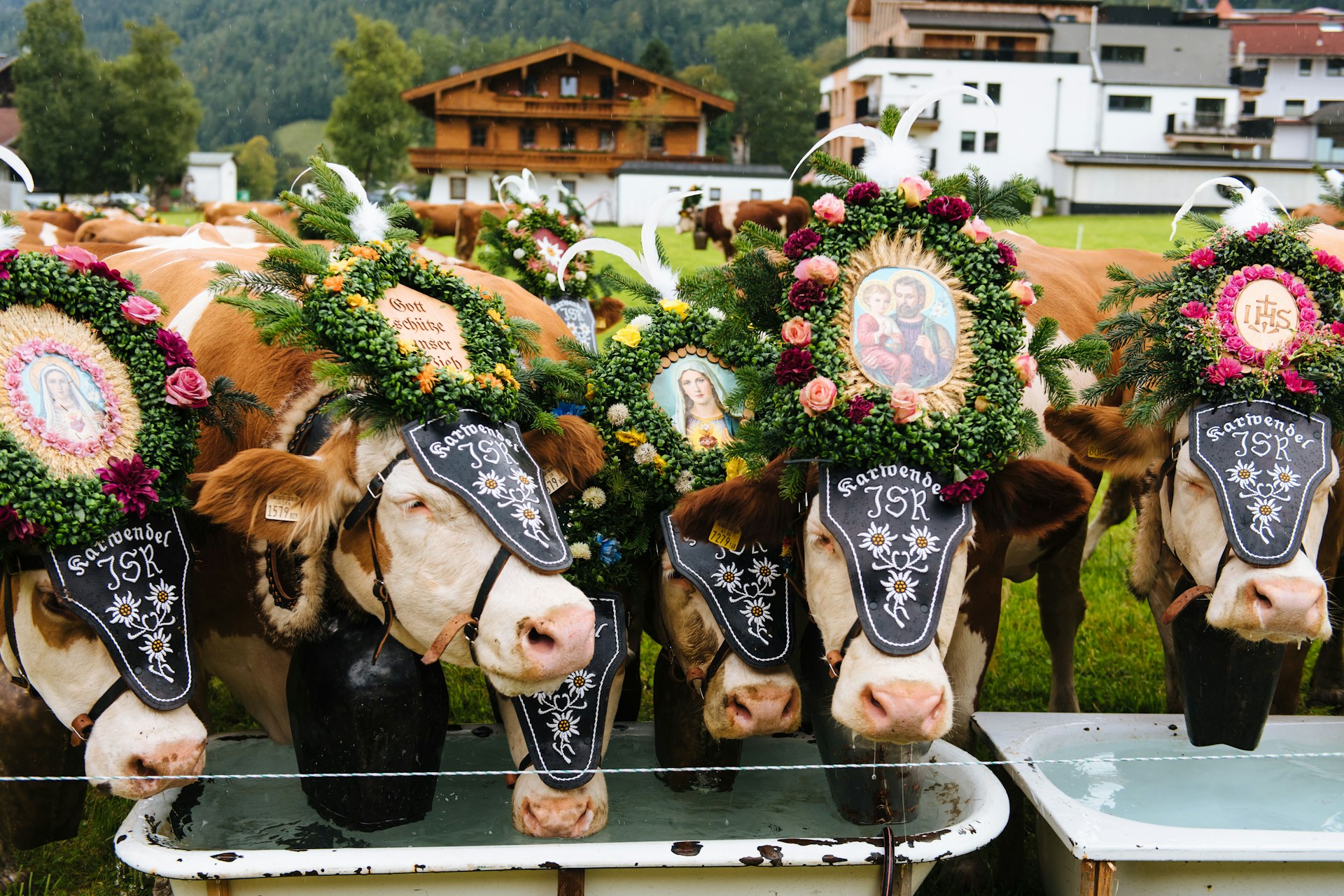
“Now I get to experience this with my mom, and it’s just the best,” she said. “This is a once-in-a-lifetime experience...being in the mountains, in the area in Tyrol, this is the only place where this happens like this. This is such a prized part of the culture.”
About an hour later, the cows continued onward along the shores of the pristine lake to their next destination, a farm in the next town over, where they’d be cleaned off and transported to the barn for winter. The clamor of bells faded as they left, and many visitors filed back into tour buses to head home. In all, it had taken just an hour for the cows to trot the five miles from the mountains down into the valley.
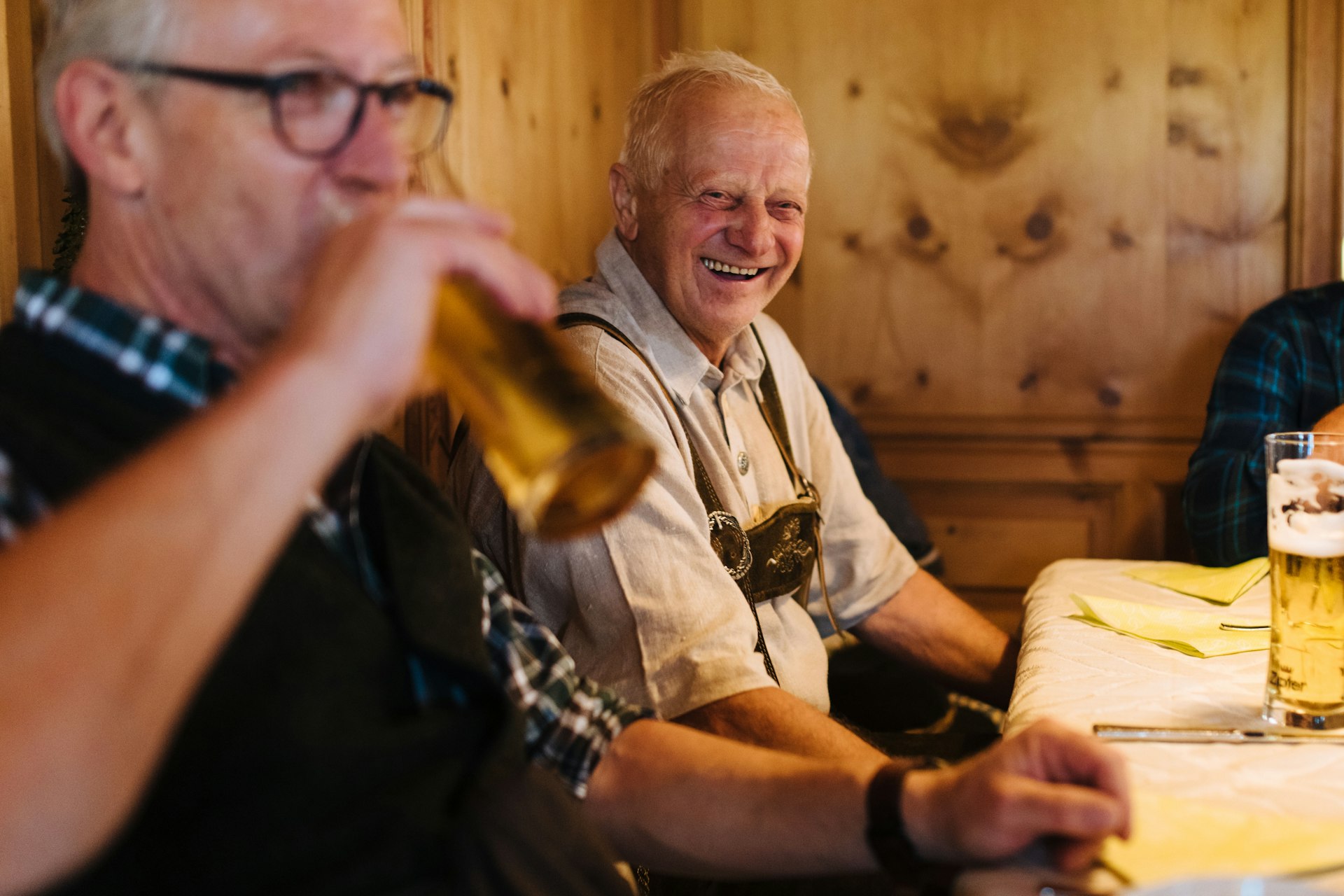
Back at the Hotel Karwendel, a small but energetic crowd of mostly locals were sipping their beers and listening to a trio of lederhosen-clad musicians. People walked between tables to say hello to friends and neighbors, pulling up chairs around already crowded tables to reflect on the day. After the spectacle of the morning and the big crowds of tourists, it felt like a sort of unofficial afterparty, one that promised to continue well into the evening.
“This is somehow the connection between tourism and culture or tradition – the possibility to experience something original, or something traditional,” Rieser said. “I really do think it’s good that we do this, and I hope it continues. But as I said, it’s getting increasingly difficult.”

